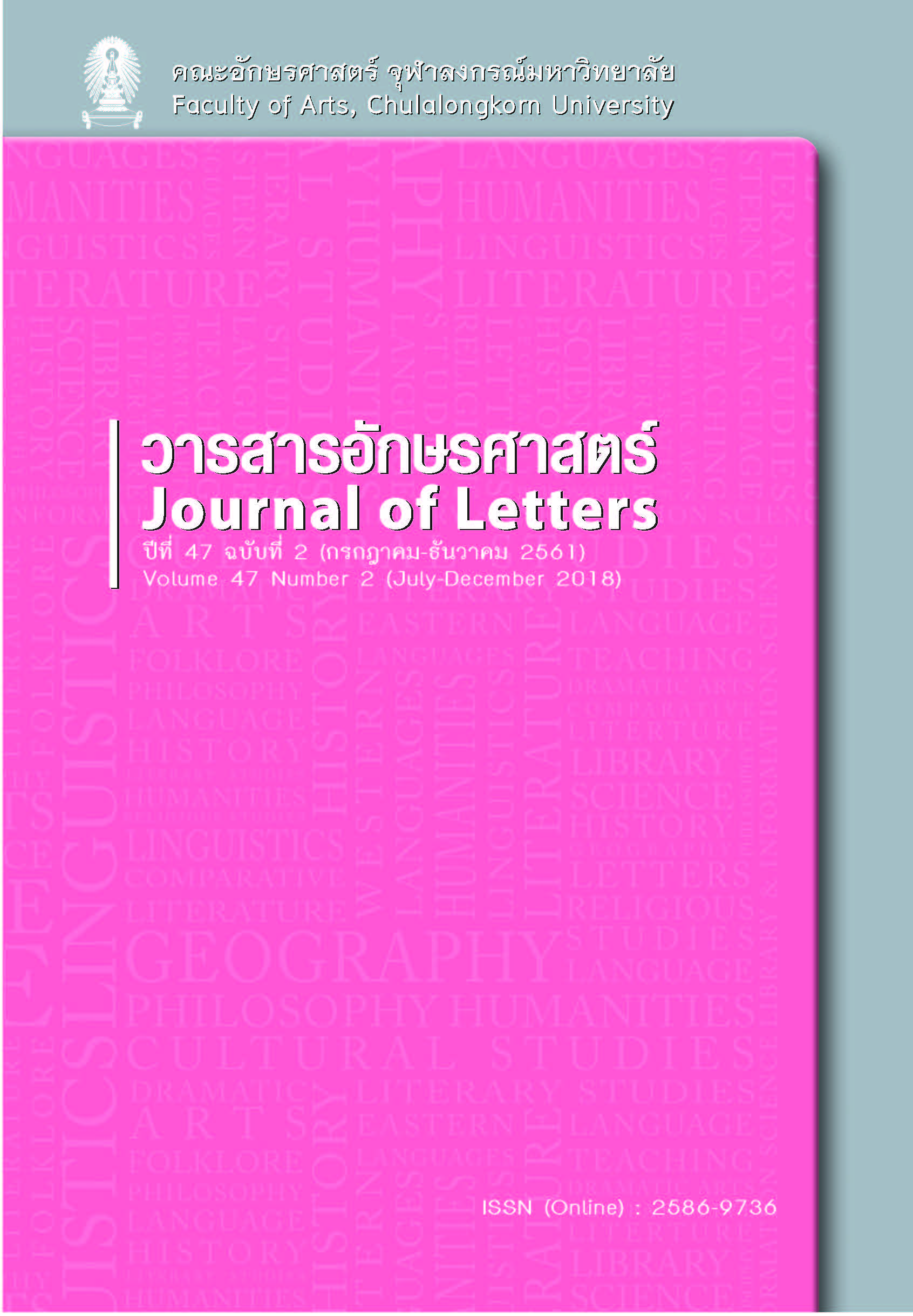Priestly accent?: an acoustic study of voice onset time in Hindi speakers in Bangkok
Keywords:
voice onset time, Hindi, stop consonant, breathiness, acoustic phoneticsAbstract
This study aims to investigate voice onset time (VOT) values of initial stops in Hindi produced by Hindi speakers in Bangkok. Hindi has four categories of stops, i.e. voiceless unaspirated stops, voiceless aspirated stops, voiced unaspirated stops, and voiced aspirated stops. Stop consonants in a monosyllabic consonant-vowel-consonant (CVC) production were obtained from six Hindi native speakers, aged 27-62, who joined Geeta Ashram Thailand association. The results reveal that voiceless stops have positive VOT values or “voicing lag”. The voicing-lag patterns of voiceless unaspirated and aspirated stops are different, i.e. short and long lag respectively. Voiced stops have negative VOT values or “voicing lead”. Regarding voiced stops, there are two variants of voicing-lead patterns which do not depend on the age variable. Some informants produced both voiced unaspirated and aspirated stops with approximately the same duration of voicing lead, which corresponds to previous studies. However, this present study finds another pattern of voiced stops – voiced unaspirated stops with “long voicing lead” and voiced aspirated stops with “extra-long voicing lead” resulting from a long aspiration portion, which were all produced by Brahmins who involved in rituals. Priestly style of pronunciation tends to be distinguished in terms of obvious aspiration.
Downloads
Published
How to Cite
Issue
Section
License
Copyright and plagiarism
Authors are responsible for obtaining permission to use copyrighted materials from copyright owners. Authors are responsible for observing requisite copyright law when quoting or reproducing copyrighted materials. Quotations and reproductions of content from other published sources must be accompanied by a reference and all sources should be clearly listed in the references section. Quotations and reproductions of content from external sources without due attribution could be considered a severe infringement of academic conduct and may constitute a legal offence under the Copyright Act of B.E. 2537. Any legal ramifications arising from the infringement of copyright regulations would be the sole responsibility of the author(s).



